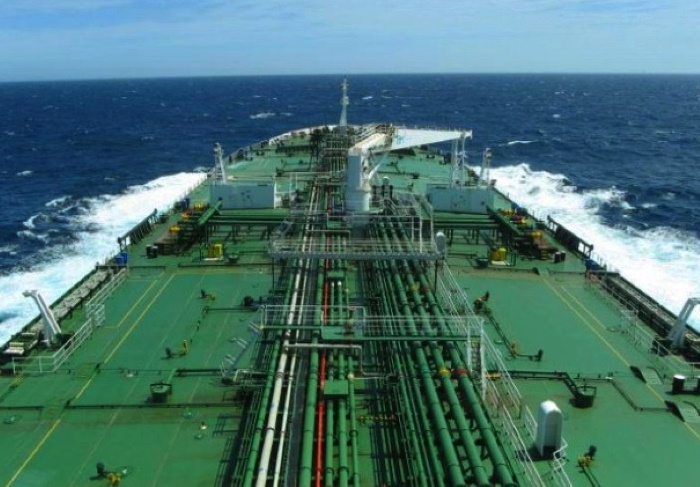search the site
Will Shipping Be Ready By 2030?: Decarbonization Goals Could Be in Jeopardy
Will Shipping Be Ready By 2030?: Decarbonization Goals Could Be in Jeopardy
in Hellenic Shipping News 20/10/2023

An aging and outdated fleet could be one of the hurdles that shipping needs to overcome, in order to achieve the decarbonization goals set by the IMO by 2030. In its latest weekly report, shipbroker Xclusiv said that “almost 7 years ahead of 2030 and ques-tions are raised as to whether the IMO’s first target of reducing the carbon intensity of international shipping, by at least 40%, compared to 2008 levels will be achieved. As of 13th October 2023, the total active fleet of 4 main sectors is standing at 29,435 vessels. In 2024 and 2025 we estimate that a total of 1,118 and 854 Bulk Carriers, Tankers, Containers and Gas (>= 10,000 DWT) will be added to the current fleet. So, if the shipbuilding capacity of current shipyards facilities can book around 1,000 orders every year, we may surmise that within the next 7 years, a total of 7,000 new vessels (Bulk Carriers, Tankers, Containers, Gas carriers over 10,000 dwt) could be added to the total fleet.

Source: Xclusiv
According to Xclusiv, “by 2030, a total of 12,200 vessels will be 21 years old and over. However, assuming that a total of 320 vessels (in BC, Tanker, Container and Gas sectors) go for scrap every year (taking the average of demolished vessels of the past 20 years), we may see a total of around 2,200 ships to go to scrapyards. Based on those numbers, we may suppose that almost 30% of that total fleet will be more than 21 years old in 2030, bringing into question whether those vessels will be able to meet technical and operational requirements of 2030’s IMO aim. We should take into consideration however, that during the last 2 years we have seen the reactivation of many shipyard facilities that have been out of the market for many years. That expansion took place due to the huge increase in newbuilding orders for bulk carrier vessels and container ships (in 2021 a total of 447 bulk carrier and 549 container ships were ordered) and the following increase for tanker newbuildings. The growth was more than anticipated, as the increase of requests for newbuildings eliminated the available slots for a long time. In January 2022, 206 ship-yards facilities were active in the total orderbook of the 4 main markets for vessels over 10.000 DWT, while in September 2023, the number of shipyard facilities increased to nearly 300. China experienced the biggest expansion at around 73 shipyard facili-ties were restarted or created, followed by Japan with 14 more facilities. A great example of shipyard reactivation is China’s Hen-gli Heavy Industries, ex STX Dalian, that was restarted under new management. Based on that, we may see a further expansion in shipyard facilities by 2030, which may increase the yearly newbuilding orders”, Xclusiv said.

Meanwhile, “the escalation of the tension between Israel and Palestine is troubling the world community, while the geopolitical risk in the region has sharply increased. This conflict creates again significant uncertainties and has left the shipping market on the edge over the potential impact on the global oil trade. This region accounts more than one-third of the global seaborne trade. There is no direct impact on physical crude oil supply until now, but Israel’s biggest oil terminal – Ashkelon – has been closed while military operations are underway. Meanwhile Israel’s energy ministry informed Chevron to shut down the Tamar natural gas field off the country’s northern coast. Israel’s gas shipments to Egypt fell by 20% as safety concerns prompted the shutdown of a key offshore field, threatening onward deliveries to Europe. At the same time the International Energy Agency has lowered its oil demand growth forecast for 2024, predicting that difficult economic conditions and improvements in energy efficiency will weigh on consumption. The energy policy think-tank expects oil demand to grow by 880,000 barrels a day next year, down from a 2.3mn b/d increase in 2023, due to “efficiency gains and deteriorating economic climate”. It had previously forecast demand to grow by 1million b/d in 2024. Oil demand growth in OECD countries has already slowed to an estimated 70,000 b/d in 2023 and is expected to enter a permanent decline next year, initially falling by 380,000 b/d in 2024. After the Covid pandemic and Rus-sian invasion in Ukraine, “wild cards” keep appearing, creating uncertainties and concerns in the tanker market but the levels still hold strong, especially in the crude trade. BDTI is on uptrend for more than one month. Since 11 September 2023, the dirty index has had 25 straight positive closings, having risen about 61%. BDTI is at 1,149 points, its highest point since 21 June 2023. BCTI is at 748 points, around 14% lower than 869 points, the highest point of the last 6 months”, Xclusiv concluded.
Nikos Roussanoglou, Hellenic Shipping News Worldwide

















